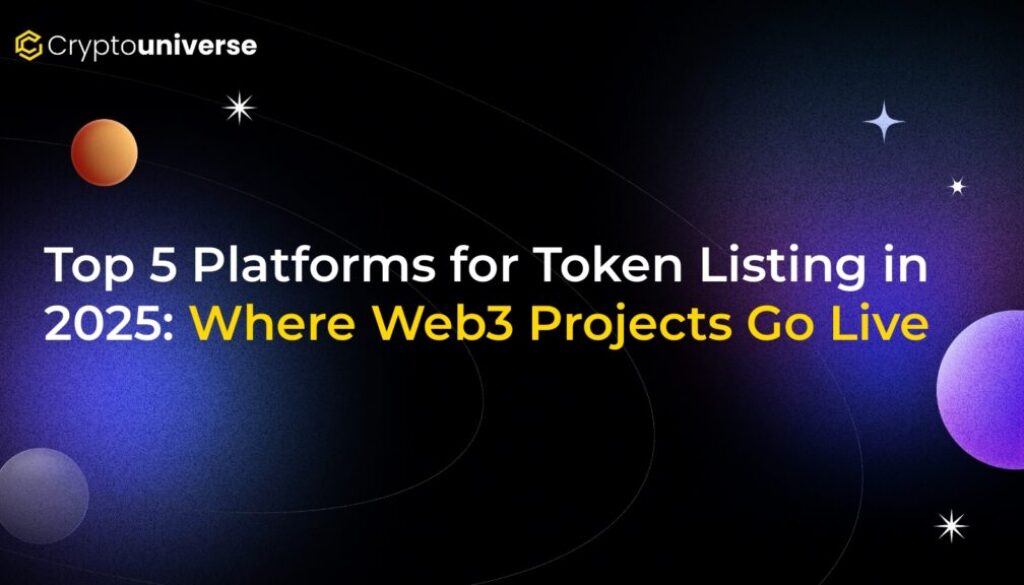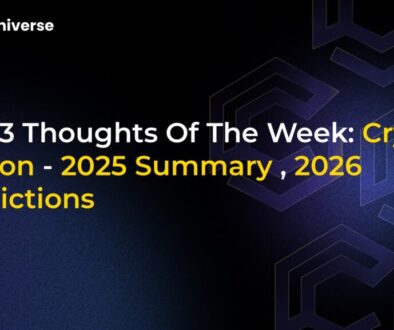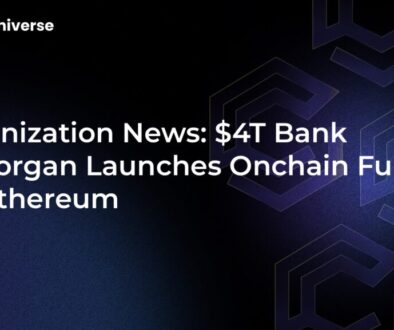Top 5 Platforms for Token Listing in 2025: Where Web3 Projects Go Live

The High-Stakes Game of a Modern Token Launch
Launching a token is no longer just a technical milestone; it’s the main event for any Web3 project. In 2025, it’s less about simply flipping a switch and more about ensuring your project appears in the right places, at the right time, and in front of the right people. Get it right, and you’re suddenly on everyone’s radar. Get it wrong, and you risk getting buried in the noise of a thousand other launches.
The Web3 space is moving at breakneck speed. Layer 2 networks are the new standard, modular chains are reshaping how protocols are built, and true cross-chain compatibility is finally becoming a reality. But with all that progress comes more complexity. A token launch isn’t just about getting on CoinMarketCap anymore; it’s a strategic campaign that starts months, or even years, before the Token Generation Event (TGE).
So, where are the smartest projects choosing to go live? The answer is no longer a simple CEX or DEX. It’s about launching within an ecosystem, a narrative, and a community. Here are the top 5 platforms and ecosystems where Web3 projects are making their mark in 2025.
1. Centralized Exchange (CEX) Launchpads: The Kingmakers
Let’s start with the titans. Platforms like Binance Launchpad and Coinbase listings remain the holy grail for many projects, and for good reason. A listing on a tier-1 CEX provides instant liquidity, massive exposure to millions of retail users, and a stamp of credibility that is hard to replicate.
In 2025, the focus is increasingly on projects incubated directly by these giants. Getting backing from Binance Labs or Coinbase Ventures isn’t just about funding; it’s a golden ticket that often paves the way for a premier launch. These exchanges put their full marketing muscle behind their portfolio projects, creating a level of hype that is nearly impossible to achieve independently.
- Pros: Unmatched visibility, deep liquidity, trust and credibility.
- Cons: Extremely competitive and difficult to get selected, high costs, and stringent requirements.
2. Thriving Layer 2 Ecosystems: Launch Where the Users Are
The narrative has firmly shifted to Layer 2s. Ethereum L2s like Base, Arbitrum, Optimism, and upcoming ZK-rollups like Linea and Zora are no longer just scaling solutions; they are vibrant, self-contained economies. Launching a token natively on a popular L2 gives a project immediate access to a dedicated and active user base, established DeFi infrastructure, and lower transaction fees for users.
We’re seeing a trend of projects building their entire community on an L2 first, gaining traction through native dApps, and then launching their token to an already-engaged audience. The “wen launch @LineaBuild” and “wen launch @zora” cries on social media highlight the immense anticipation building within these ecosystems.
- Pros: Access to an active user base, lower gas fees, strong DeFi and NFT infrastructure.
- Cons: The space is becoming increasingly crowded, making it harder to stand out.
3. Next-Generation Layer 1s: Riding the Hype Wave
While L2s dominate the conversation, a new generation of high-performance Layer 1s is capturing the imagination of developers and investors. The prime example for 2025 is Monad. With its promise of parallel execution and massive throughput, it has cultivated one of the largest and most dedicated pre-launch communities in recent memory.
Projects choosing to launch on an emerging L1 like Monad are making a bet on the future. They aim to become a foundational pillar of a new ecosystem, capturing value as the chain itself grows. The potential for a massive airdrop from the L1 itself draws in millions of users, providing a ready-made audience for the first dApps to launch their own tokens.
- Pros: Opportunity to be a ‘big fish’ in a new pond, ride the hype of the L1 launch, and attract a highly engaged, risk-tolerant user base.
- Cons: A high-risk, high-reward strategy that depends on the success of the underlying L1.
4. Modular & Interoperability Hubs: Building for a Multi-Chain Future
The idea of a single “ETH killer” is dead. The future is multi-chain, and the infrastructure reflects that. Modular stacks built around data availability layers like Celestia and interoperability protocols are the new frontiers. Projects like Initia and those within the Cosmos ecosystem are designed from the ground up for a world where assets and data flow seamlessly between chains.
Launching on a modular or interoperability-focused platform signals a project’s long-term vision. It’s not just about launching a token; it’s about building a protocol that can exist and thrive across multiple ecosystems. This strategy appeals to sophisticated investors and developers who understand that isolation is a death sentence in the Web3 of 2025.
- Pros: Future-proofs the project, enables cross-chain functionality, and aligns with the dominant modular narrative.
- Cons: The technology is still nascent and can be more complex to build on and explain to users.
5. Community & Airdrop Platforms: Win Hearts Before Wallets
Perhaps the biggest shift in token launches is the focus on pre-TGE community building. The launch is no longer a single event but the climax of a long campaign. Platforms like Galxe, Layer3, and even a project’s own curated Discord server have become critical launchpads in their own right.
The strategy is simple: engage users for months with quests, testnets, and community roles. This airdrop farming meta, while sometimes controversial, is an incredibly powerful tool for bootstrapping a distributed network of stakeholders. By the time the token goes live, there are already tens of thousands of advocates who have a vested interest in the project’s success. This approach turns the TGE from a speculative event into a community-owned celebration.
- Pros: Builds a loyal and engaged community from day one, decentralizes token distribution, and creates powerful grassroots marketing.
- Cons: Requires significant time and effort in community management and can attract mercenaries who dump the token immediately.
Conclusion: The Launch is Just the Beginning
Choosing where to launch your token in 2025 is a multifaceted decision that goes far beyond picking an exchange. It’s about aligning with the right technology, narrative, and community. Whether it’s the raw power of a CEX, the vibrant economy of an L2, the explosive potential of a new L1, the forward-thinking vision of a modular stack, or the grassroots strength of a dedicated community, the right platform is the one that sets your project up not just for a successful launch day, but for long-term growth and adoption in an ever-evolving Web3 landscape.


